For sixty years, Island Records has been at the forefront of all the musical moments that mattered. One of the world’s great labels, it has become a byword for artistic integrity and innovation, staying true to its long-established independent ethos by signing mavericks and game-changers who have altered the course of music in Britain, Jamaica, America and beyond. And, while times have changed, the attitude, street-cool and striking visuals at the label’s creative core have remained the same.
The history of Island began with a jazz album made in Jamaica. In 1959 – the same year as Berry Gordy was putting together his fledgling Tamla label in Detroit – a young, Jamaican-based Englishman, Chris Blackwell, released an album of jazz standards by blind Bermudan singer and pianist Lance Hayward called At The Half Moon Hotel, Montego Bay. Blackwell, 21, had started a record label, named Island after Alec Waugh’s novel Island In The Sun, with a loan from his parents. He went on to release a string of records which tapped into Jamaica’s vibrant music spirit, securing his first hit with Laurel Aitken’s Boogie In My Bones, before relocating to London with his three business partners in 1962.
In the UK, Blackwell distributed the records himself, driving up the newly-opened M1 motorway in his Mini Cooper to serve the West Indian immigrant communities in London, Birmingham and Manchester. Not every artist he signed saw their records released on Island. His first UK hit, in 1964, was a ska cover of Barbie Gaye’s Fifties hit My Boy Lollypop, sung by Jamaican teenager Millie Small and licensed to Fontana, part of the Philips group. Realising you could compete with yourself in the record racks, Blackwell also set up subsidiaries. There was Black Swan for ska and Jump Up for Trinidadian calypsos. Another subsidiary, Sue, was run by the legendary Guy Stevens, DJ at fabled Soho mod club The Scene and the man with the most extensive collection of American R&B in the UK. Among the hits on Sue were Inez & Charlie Foxx’s Mockingbird and Bob & Earl’s Harlem Shuffle
Blackwell distributed the records himself, driving up the newly-opened M1 motorway in his Mini Cooper
In the UK, Blackwell distributed the records himself, driving up the newly-opened M1 motorway in his Mini Cooper to serve the West Indian immigrant communities in London, Birmingham and Manchester. Not every artist he signed saw their records released on Island. His first UK hit, in 1964, was a ska cover of Barbie Gaye’s Fifties hit My Boy Lollypop, sung by Jamaican teenager Millie Small and licensed to Fontana, part of the Philips group. Realising you could compete with yourself in the record racks, Blackwell also set up subsidiaries. There was Black Swan for ska and Jump Up for Trinidadian calypsos. Another subsidiary, Sue, was run by the legendary Guy Stevens, DJ at fabled Soho mod club The Scene and the man with the most extensive collection of American R&B in the UK. Among the hits on Sue were Inez & Charlie Foxx’s Mockingbird and Bob & Earl’s Harlem Shuffle.
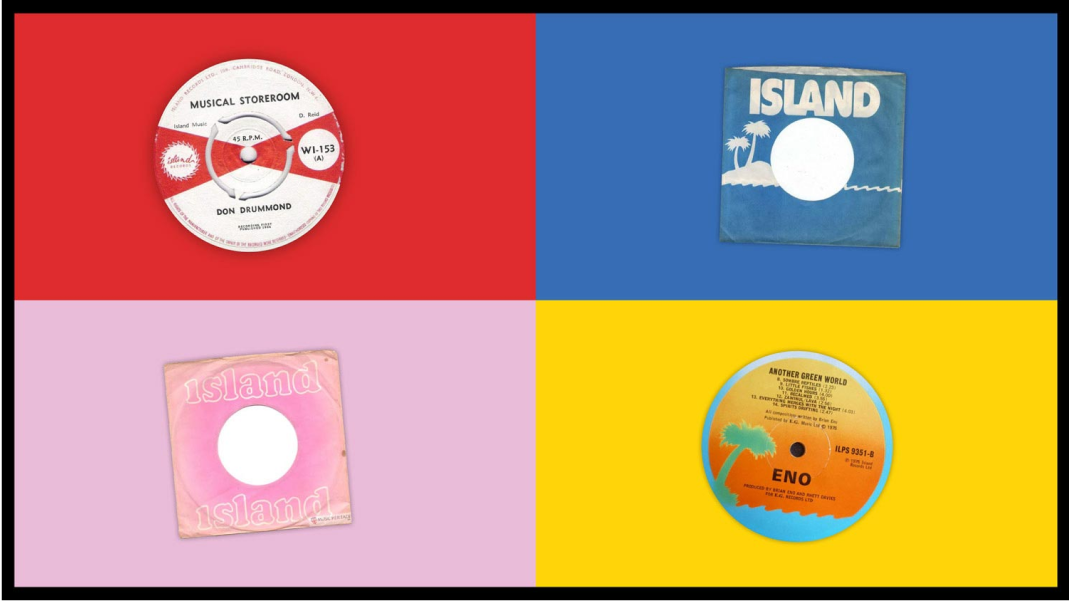
Imported sounds weren’t his sole focus. In 1963, Blackwell discovered a Birmingham band making moves in the local rhythm and blues clubs. Featuring teenage prodigy Steve Winwood, whose high-pitched voice drew comparisons with Ray Charles, the Spencer Davis Group were signed up and also licensed to Fontana, where they enjoyed hits with Gimme Some Lovin’ and Keep On Running. When the band split in 1967, Winwood formed Traffic, whose exploratory fusion of rock, pop, soul and R&B became a touchstone for Island as it grew into its next phase. Reflecting the general move away from singles-driven pop towards albums, Traffic became a cornerstone of Island’s ‘pink’ label, an imprint that represented a fresh way of looking at the world.
Launched in 1967 with Owen Grey’s Help Me, the pink label came to define a distinctive strain of alternative, cutting-edge British rock and folk. Alongside Traffic, it released the two celebrated, budget-priced 1969 samplers You Can All Join In and Nice Enough To Eat and signed Quintessence and heavy rock act Spooky Tooth. Jethro Tull gave Island an unlikely hit single with Living In The Past and its first number one LP in Stand Up, while teenage quartet Free, built around the talents of blues belter Paul Rodgers and guitarist Paul Kossoff and rightly described as ‘an unbelievable band’ by Blackwell, also secured a huge hit with All Right Now. Elsewhere, there was the progressive rock of King Crimson’s In The Court Of The Crimson King – all strange time signatures, classical borrowings and technical sophistication – and the spectacular fusion of art-rock and classical that was the calling card of ELP, a supergroup assembled by keyboardist Keith Emerson, bassist and vocalist Greg Lake and drummer Carl Palmer.
Having began their career with an astonishing performance in front of 600,000 at the Isle Of Wight Festival in 1970, ELP’s ‘show that never ends’ was a pioneering force as live music moved out of traditional theatres and into arenas. At a time of great creativity and success in British rock, Island was also at the forefront of the quieter sounds that emerged as homegrown artists responded to the singer-songwriter boom taking hold in Laurel Canyon on America’s West Coast.
Formed in 1967 and brought to Island via a deal with American producer Joe Boyd’s production company Witchseason, Fairport Convention underwent so many line-up changes that they were dubbed Fairport Confusion, but their mix of English folk and American rock left an indelible mark, with guitarist Richard Thompson and singer Sandy Denny combining on the classic albums What We Did On Our Holidays, Unhalfbricking and Liege And Lief, with the latter voted the most influential folk album of all time. Also arriving at Island via Witchseason was singer-songwriter Nick Drake, a shy live performer whose quiet brilliance went largely without acknowledgement in his short lifetime only for his albums Five Leaves Left, Bryter Later and Pink Moon to be acclaimed as classics decades after his death in 1974. Success was more immediate for others, including Glasgow songwriter John Martyn and melodic folk-pop storyteller Cat Stevens / Yusuf, whose Teaser And The Firecat, Catch Bull At Four and Tea For The Tillerman LPs were huge hits.
...another strain of British rock was appealing to an audience who were growing tired of beards and denim...
As Island moved its London operations from Notting Hill to an impressive town house in Hammersmith’s St. Peter’s Square, so another strain of British rock was appealing to an audience who were growing tired of beards and denim – and Island was again in the vanguard. As a band whose key members were former art students rather than aspiring folk or blues players, Roxy Music represented the shock of the new when their self-titled, game-changing debut arrived in 1972. Despite having played only a handful of gigs, they had supreme confidence in their futuristic vision and delivered four more quick-fire albums for Island, culminating in 1975’s Siren. As pop-soul and glam began to dominate the charts, Roxy were joined on the label by blue- eyed Yorkshire soul singer Robert Palmer and Los Angeles duo Sparks.
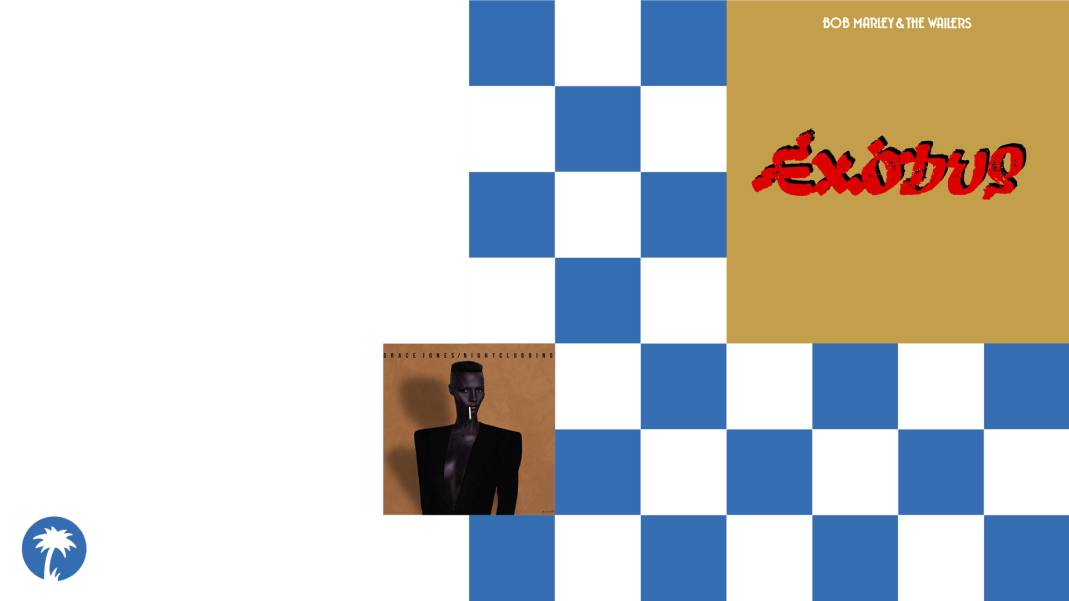
Island’s Jamaican heritage remained a vital source of inspiration too. Having released the soundtrack to Perry Henzell’s classic The Harder They Come, Chris Blackwell also began a partnership with the great Bob Marley that would help to turn the Jamaican singer, bandleader and rebel soul into the Third World’s first musical superstar. Marley’s first two Island albums, Burnin’ and Catch A Fire, were released in 1973. Both were credited to The Wailers, a band that also featured fellow singers Peter Tosh and Bunny ‘Wailer’ Livingstone. Marketed in a similar fashion to the label’s successful rock acts, with an iconic appearance on BBC2’s The Old Grey Whistle Test helping to create a profile, the band – renamed Bob Marley & The Wailers after the departures of Tosh and Livingstone – went on to global success with 1975’s Live At The Lyceum, which featured No Woman No Cry, and the albums Exodus, Kaya, Survival, Uprising and Confrontation.
As the Seventies blended into the Eighties, reggae began to expand in hitherto unforeseen ways. In the UK, Steel Pulse and Aswad, both on Island, reinforced the notion that reggae was no longer a style of music made purely by singers with backing bands by lining up just as a traditional rock group would. Dub poet Linton Kwesi Johnson also signed to Island, brilliantly articulating the Black British experience of everyday oppression on the albums Forces Of Victory, Bass Culture and Making History. Further afield, Island signed Burning Spear and Black
Uhuru and sealed a deal with Sly & Robbie’s Taxi label, signposting a move towards synthetic, harder edged sounds, while Third World’s Now That We’ve Found Love was a potent mix of reggae and disco.
The label also attracted mavericks of every musical hue. Island initially kept a low profile as the London punk scene flowered before making up for lost time by signing one of the most iconic punk acts of them all, The Slits, whose debut album Cut was produced by dub maestro Dennis Bovelle.
Former model Grace Jones transformed herself from disco diva into otherworldly ice maiden on futuristic funk albums like Warm Leatherette, Night Clubbing and Living My Life. Recording at Compass Point in the Bahamas, her deadpan, languorous style lent itself perfectly to the emerging 12-inch format, with her extended single mixes of Pull Up To The Bumper and My Jamaican Guy huge hits in the clubs. Blackwell’s Compass Point studio proved fertile ground for Island, with Talking Heads spin-off group Tom Tom Club’s Genius Of Love and Wordy Rappinghood also created there. Jones was joined on Island by Marianne Faithfull and bar-room beatnik Tom Waits, who barked his tough, urban blues songs against a backdrop of bassoons, pump organs and brass bands on 1983’s Swordfishtrombones and 1985’s Raindogs.
Nurtured by Island and allowed to develop at their own pace, U2 signed to the label in March 1980 because no other record company made a bid for them...
As always, Island’s horizons remained broad, stretching from Washington D.C., from where go-go kings Trouble Funk were signed in 1985, to the West African state of Cameroon, where a deal was struck with jazz and funk saxophonist Manu Dibango for the albums Gone Clear and Ambassador. With two volumes of the Sound D’Afrique compilation cementing the label’s links with Francophone Africa, King Sunny Ade arrived at Island with his band The African Beats and delivered the guitars and dance beats of 1982’s Juju Music, 1983’s Synchro System and the more electronic Aura. With the Mango imprint becoming Island’s official world music outlet, the roster grew to include Mali’s Salif Keita, his countryman Ali Farka Toure, Benin’s Angelique Kidjo, Senegal’s Baaba Maal and the Algerian rai of Khaled. In a throwback to Island’s jazz origins, UK multi-instrumentalist Courtney Pine released Journey To The Urge Within.
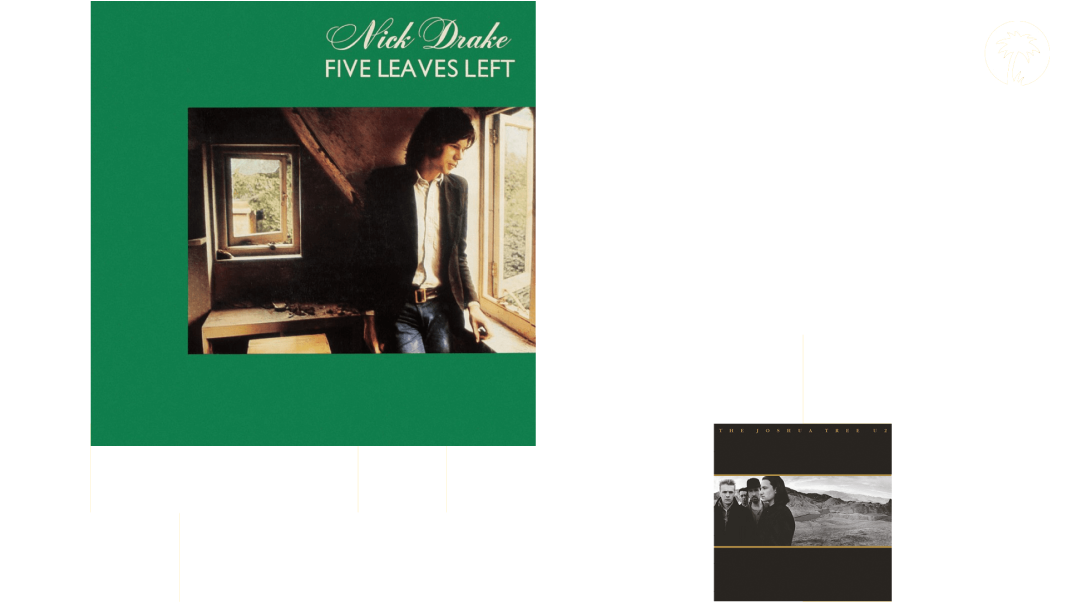
The Eighties also saw the arrival of a band who went on to become the biggest in the world. Nurtured by Island and allowed to develop at their own pace, U2 signed to the label in March 1980 because no other record company made a bid for them. They made their bow that year with Boy but it wasn’t until 1987’s The Joshua Tree, produced with Eno and Daniel Lanois, that their status went stratospheric. The Joshua Tree was followed by Achtung Baby, recorded in Berlin as the wall was coming down, and a string of elaborately-staged tours – Zoo TV, Pop Mart, Elevation, Vertigo, 360º – that redefined the parameters of a stadium spectacle with flying Trabants, golden arches and digital screens. Playing to their strengths of visceral power, precision and emotional engagement, U2 continued to make music into a new millennium with 2000’s All That You Can’t Leave Behind and 2004’s How To Dismantle An Atomic Bomb. Another album, Songs Of Innocence, was initially made available to 500 million iTunes customers in a pioneering joint venture between the band, Island and computer giant Apple. Its 2016 sequel, Songs Of Experience, added a state-of-the-art studio sheen to what singer Bono calls the ‘primary colours’ of guitar, bass and drums.
By this point, Island had ceased to be independent in the traditional sense. In 1989, Blackwell sold the label to the Polygram UK Group, later a part of Universal Music, for a reported $272 million. But, while the UK’s greatest ever independent was now part of a wider corporate structure, its penchant for championing idiosyncratic characters didn’t disappear.
Among the first stars of a new era was Jarvis Cocker and his Sheffield band Pulp, who brightened up the gloomy, post-grunge years with the dazzling, synth-powered disco-pop of 1995’s Mercury Music Prize- winning Different Class album and its thunderous single Common People. Island looked good on the dancefloor, too, with The Orb’s dubby debut album U.F.Orb reaching number one in 1992 and Bristol-based trip-hop star Tricky, a sometime Massive Attack collaborator, releasing his mesmerising debut Maxinquaye in 1995. More pioneering soundscapes arrived in 1998, when tabla player Talvin Singh released a debut, OK, that also won the Mercury Prize.
Then there was Amy. A London music obsessive well versed in jazz, soul and hip hop...
Given that the prestigious Mercury rewarded creativity rather than simply sales, Island’s position as the the most innovative label of its day was reiterated two years later, in September 2001, when PJ Harvey took home the prize for her stunning Stories From The City, Stories From The Sea. On tour in America when her win was announced, she gave her acceptance speech as she watched the Pentagon burning from her Washington D.C. hotel. It would be the first of two wins for the compelling Harvey, who had made her Island bow with the blistering beats and visceral lyrics of Rid Of Me in 1993.
She also won the Mercury for her eighth album, Let England Shake, an extraordinary state-of-the-nation address that that looked at troubled times through the prism of history, painting England as a nation defined by its foreign wars and loss of Empire while simultaneously celebrating the country’s misty natural beauty and ‘the grey, damp filthiness of ages’. Let England Shake was followed by The Hope Six Demolition Project, inspired by trips to Kosovo, Afghanistan and Washington, D.C. with film-maker Seamus Murphy.
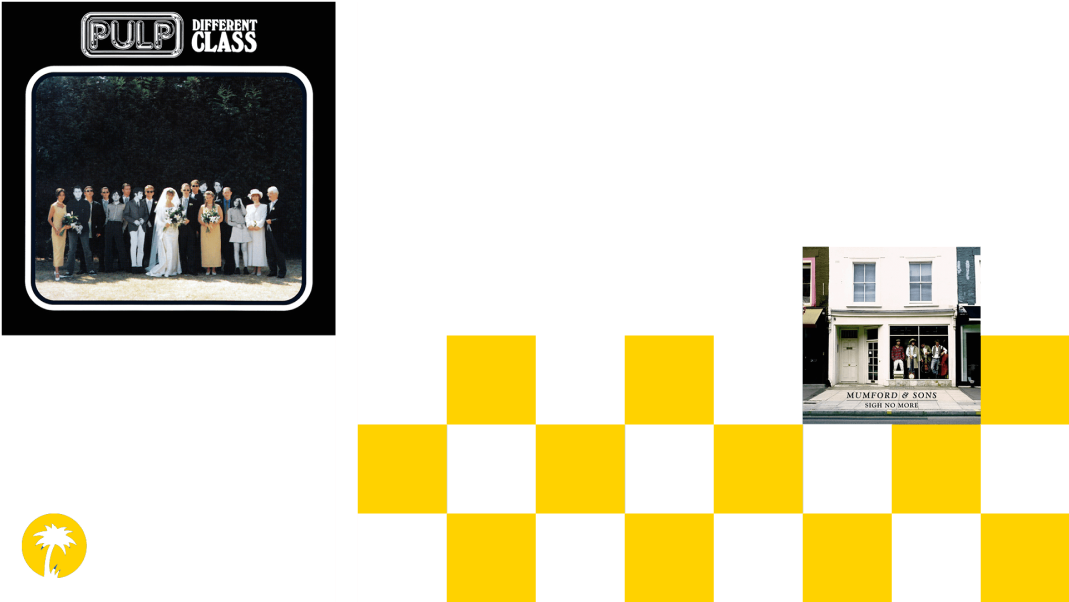
Another of Britain’s great songwriters, Paul Weller, arrived on Island in time for his fifth solo album, 2000’s Heliocentric. He left shortly afterwards, but returned eight years later to embark on an outstanding trilogy of late-career masterpieces that encompassed the audacious 22 Dreams – cosmic jazz, folk-tinged tango and Noel Gallagher – Wake Up The Nation and Sonik Kicks. The Noughties also saw the emergence of Keane, three ‘naïve, unfashionable’ friends from Sussex whose debut album, Hopes And Fears, sold five million in 2004. If that record captured a sense of innocence amplified by singer Tom Chaplin’s choirboy vocals, Keane blossomed as they grew into manhood, following the introspective Under The Iron Sea with the shiny Perfect Symmetry and Strangeland, an album that did for the Sussex seaside what Springsteen did for the New Jersey shore.
Then there was Amy. A London music obsessive well versed in jazz, soul and hip hop, the former BRIT School student came to prominence with her debut album Frank, a late-night melange of jazzy beats and rude-girl lyrics that announced the arrival of the most gifted vocalist of her generation. But it was her October 2006 follow-up, Back To Black, that found Amy at her creative zenith. Made in New York with producers Mark Ronson and Salaam Remi, it was a masterpiece steeped in the sounds of the Fifties and Sixties – doo-wop, the Shangri-Las, Phil Spector – but was also contemporary in its brutal emotional honesty and wit. No wonder Ronson described its maker as ‘loud, brash, funny as shit and a true modern-day pop star’. Back To Black won five Grammy Awards in 2008, but would be the last album Amy released during her short lifetime.
Her death, at 27 in July 2011, robbed the world of a unique talent just as Amy was pulling herself back from the brink. The songs she left behind have endured, though: if any one artist defined the opening decade of the 21st Century, it was her.
In 2009, Island marked its 50th anniversary with an exhibition and some brilliant live shows. The festivities centred around a week-long run of concerts in London – tracing the label’s history from its jazz and reggae roots through to the modern era – while there was another Island 50 tribute at the Montreaux Jazz Festival in Switzerland.
The anniversary paved the way for a new decade that was entered on a tide of optimism. The years that followed witnessed commercial breakthroughs for Florence + The Machine, Mumford & Sons, Ben Howard, Hozier, Jack Garratt, John Newman, Aluna George, Disclosure, Jessie Ware, Bombay Bicycle Club and Sigrid plus more live specials. The latter included a string of bespoke, one-day festivals for staff, media and fans on the Essex island of Osea. Among those to play the event were The Weeknd, Sean Paul and Sigrid.
Island continued to create superstars, too, with Florence Welch releasing a series of ground- breaking albums as Florence + The Machine. Her indie-rock debut, Lungs, sold four million and spent over 12 months in the UK chart before being crowned album of the year at the BRITs in 2010. That was followed by 2011’s theatrical Ceremonials and 2015’s more introspective How Big How Blue How Beautiful.
Her response to the tragic events of May 2017, when a suicide bomber killed 22 of her fans and injured dozens after a concert at Manchester Arena, was admirable and dignified...
Mumford & Sons grew out of a series of impromptu jam sessions in London in 2007, although the four-piece didn’t sign a licensing deal with Island until 2009. Heralded as standard bearers for a new wave of folkish, countrified rock, they paid their dues by playing live extensively before releasing debut album Sigh No More. That sold two million and won best album at the BRIT Awards in February 2011. The follow-up, Babel, did even better, becoming the UK’s fastest-selling record of 2012 and winning album of the year at the 2013 Grammys. And, while 2015’s Wilder Mind saw a move away from banjos and accordions towards arena-sized rock riffs, the band changed course again on 2018’s Delta, adding electronics and broad, orchestral sweeps to their tender, confessional songs.
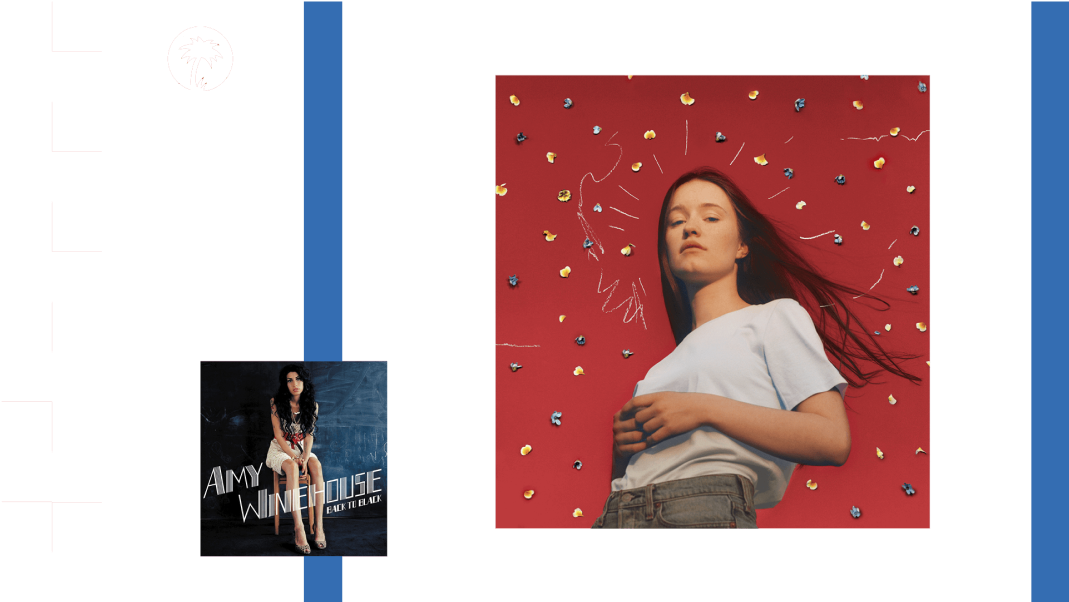
Island were successful, too, in securing British breakthroughs for some of the 21st Century’s biggest superstars in Drake, The Weeknd, Ariana Grande and Post Malone. Toronto hip hop artist Drake’s success came after the label had patiently built his profile over a number of years, culminating in the achievements of his fourth album, Views, in 2016. One Dance, his first British number one single, sold 1.9 copies to become the UK’s biggest-selling song of 2016. Canadian singer and songwriter The Weeknd also cemented his position as one of the world’s biggest stars, with the UK success of his third album Starboy the result of a strategy that had seen Island build a profile from his first studio effort Kiss Land in 2013.
The route taken by Ariana Grande was different. A former child actress and Broadway entertainer, the singer from Boca Raton, Florida, began to make full use of her agile soprano on 2013’s R&B-orientated Yours Truly before expanding her palette on My Everything and Dangerous Woman. Her response to the tragic events of May 2017, when a suicide bomber killed 22 of her fans and injured dozens after a
concert at Manchester Arena, was admirable and dignified: within weeks, Grande returned to the city to host the One Love Manchester benefit concert and visit survivors. If her subsequent album, 2018’s Sweetener, was more reflective, it was hardly surprising. For maverick Texan rapper Post Malone, success came more rapidly, with his genre-blending 2016 debut album Stoney setting the tone for 2018’s all-conquering Beerbongs & Bentleys, which topped the US and UK charts and broke first-day streaming records on Spotify with 79 million global streams.
With its 60th anniversary looming, the label is now looking to the future, with Sigrid releasing her hotly anticipated debut album and new names such as ‘Tottenham songbird’ Miraa May, South Londoner Ray Blk, Australian female duo Little May and fellow Aussie singer-songwriter Dean Lewis on the rise. Island’s next chapter is about to be written.
